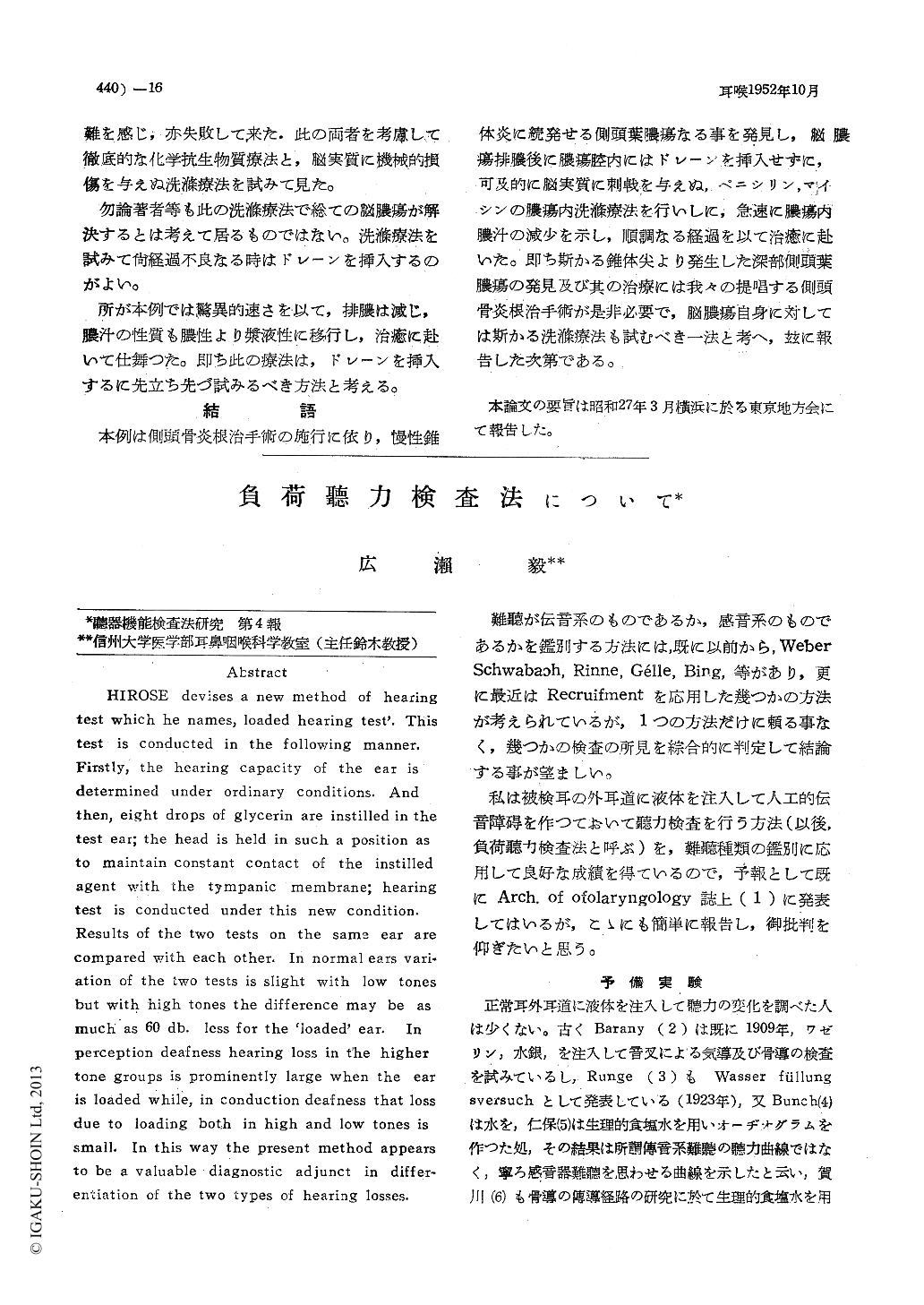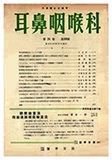- 有料閲覧
- 文献概要
- 1ページ目
難聽が伝音系のものであるか,感音系のものであるかを鑑別する方法には,既に以前から,Weber Schwabaoh,Rinne,Gelle,Bing,等があり,更に最近はRecruifmentを応用した幾つかの方法が考えられているが,1つの方法だけに頼る事なく,幾つかの検査の所見を綜合的に判定して結論する事が望ましい。
私は被検耳の外耳道に液体を注入して人工的伝音障碍を作つておいて聽力検査を行う方法(以後,負荷聽力検査法と呼ぶ)を,難聽種類の鑑別に応用して良好な成績を得ているので,予報として既にArch. of ofolaryngology誌上(1)に発表してはいるが,こゝにも簡単に報告し,御批判を仰ぎたいと思う。
HIROSE devises a new method of hearing test which he names, loaded hearing test'. This test is conducted in the following manner. Firstly, the hearing capacity of the ear is determined under ordinary conditions, And then, eight drops of glycerin are instilled in the test ear; the head is held in such a position as to maintain constant contact of the instilled agent with the tympanic membrane; hearing test is conducted under this new condition. Results of the two tests on the same ear are compared with each other. In normal ears variation of the two tests is slight with low tones but with high tones the difference may be as much as 60 db. less for the'loaded'ear. In perception deafness hearing loss in the higher tone groups is prominently large when the ear is loaded while, in conduction deafness that loss due to loading both in high and low tones is small. In this way the present method appears to be a valuable diagnostic adjunct in differentiation of the two types of hearing losses.

Copyright © 1952, Igaku-Shoin Ltd. All rights reserved.


